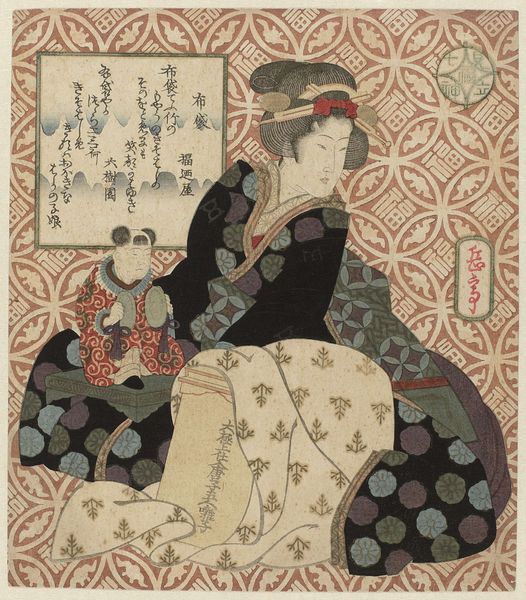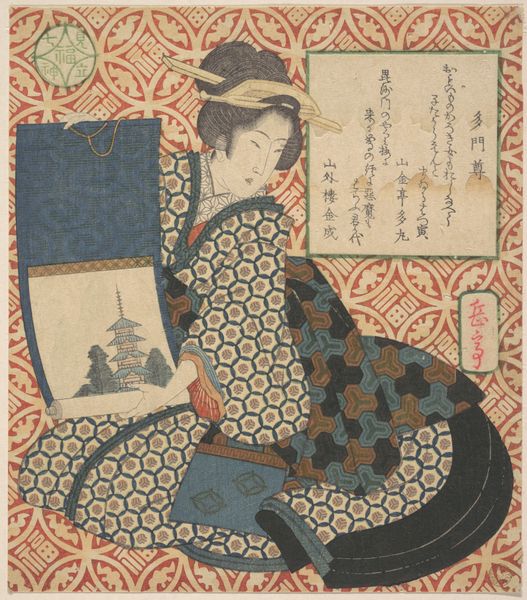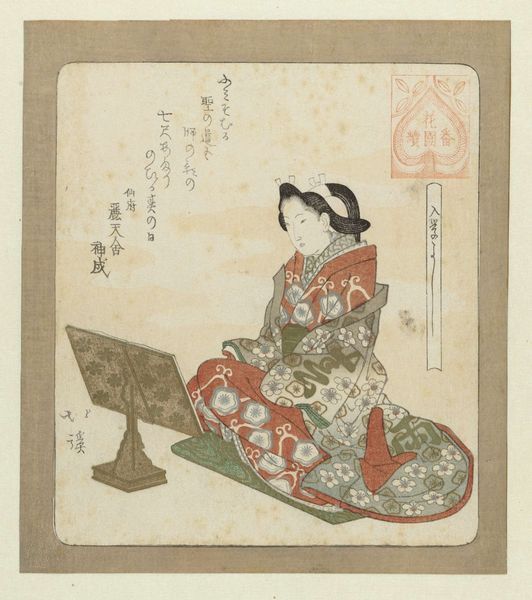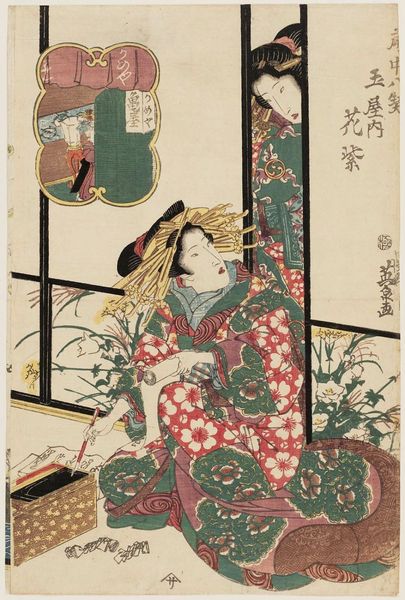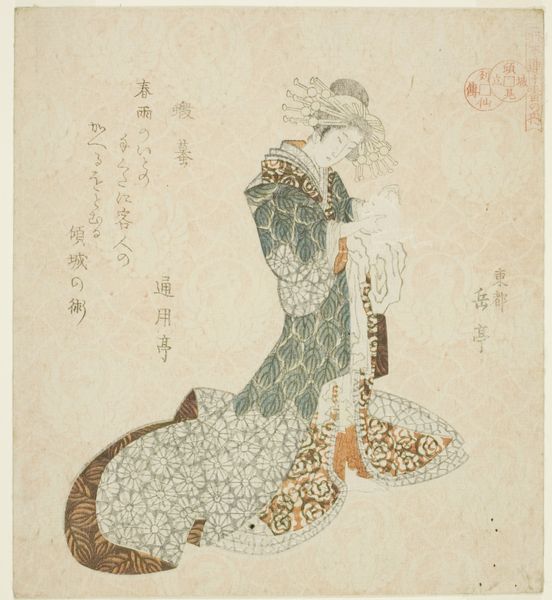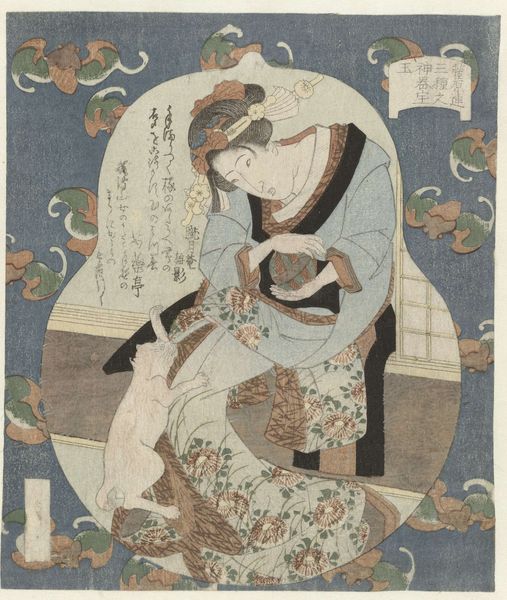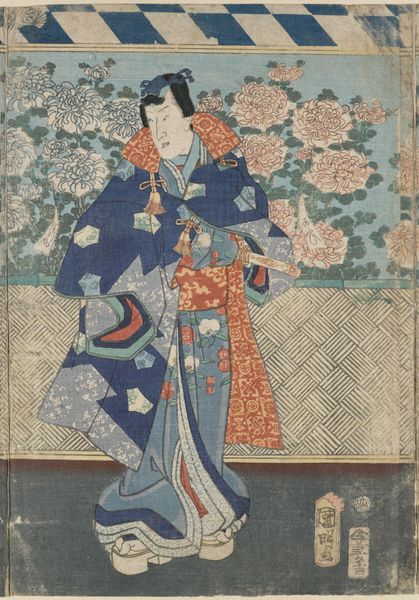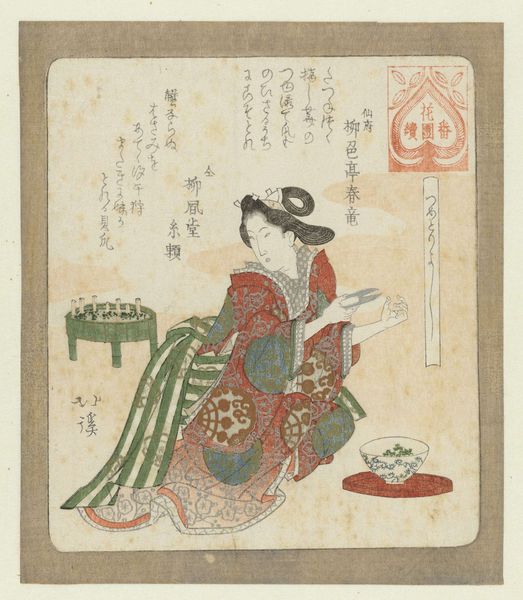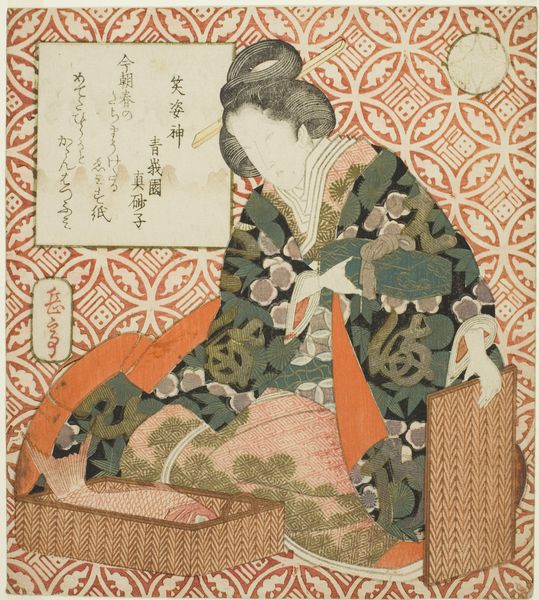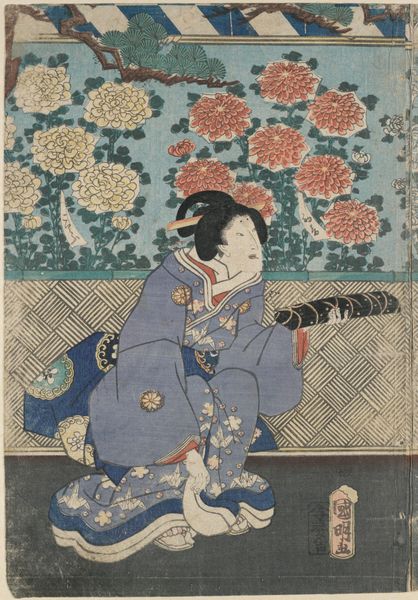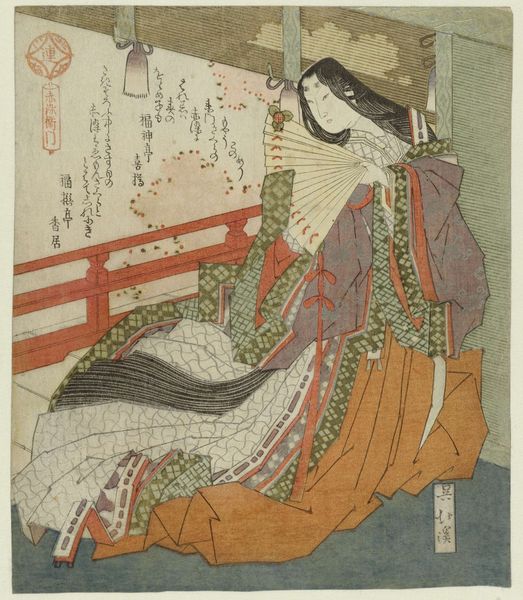
Dimensions: height 209 mm, width 186 mm
Copyright: Rijks Museum: Open Domain
Curator: This print, dating from 1868 to 1912, is titled "De Godin Benten" and attributed to Yashima Gakutei. What are your first thoughts on encountering this work? Editor: A certain dreaminess, perhaps? The muted palette and intricate patterns give it a very quiet, almost wistful feel. The female figure looks withdrawn, or perhaps deeply focused. I immediately wonder about the position of women and artistic expression in this context. Curator: That’s a useful avenue to pursue. We know this is a woodblock print—a meticulous process. Consider how the artist constructs the figure of Benten, one of the seven gods of fortune, primarily associated with music, eloquence, and wealth, through precise lines and subtle color gradations. The patterns on her robe create a dynamic tension between surface decoration and the form beneath. The lute too, so simplified, yet so elegantly conveyed. Editor: Indeed. The patterns—both on her kimono and the surrounding textile background— speak volumes about social status and access to intricate craft traditions. Look how Benten embodies cultural ideals, performing femininity through artistry, but I can't help but also consider the agency of the women artisans involved in creating this work. Are their stories told? What's the tension, if any, between subject and creator here? Curator: The interplay of text and image interests me greatly. Note the cartouche on the upper left – calligraphy that isn’t purely decorative. The textual addition reinforces the theme. One wonders what those textual inclusions meant at that moment. Editor: Absolutely. The use of calligraphy adds another layer of complexity, connecting her not just to music, but to poetic expression. Perhaps that script can guide our interpretations, allowing a closer interrogation of Benten and gender expression at that particular intersection. It's important to acknowledge that representations of deities are also invariably invested in the complex social codes of their cultural origin, especially for figures whose cultural relevance spanned centuries, like Benten’s. Curator: Analyzing those intricacies and the use of various semiotic components provides rich context in how viewers engage in a historical period through a careful and sophisticated construction. Editor: Precisely! Context is key. I will be curious to understand that moment through the representation that it is, connecting these aesthetics of that culture to social relevance, artistic conventions, gender performances and representations. I want to walk away considering not just *what* I saw, but *why*.
Comments
No comments
Be the first to comment and join the conversation on the ultimate creative platform.
